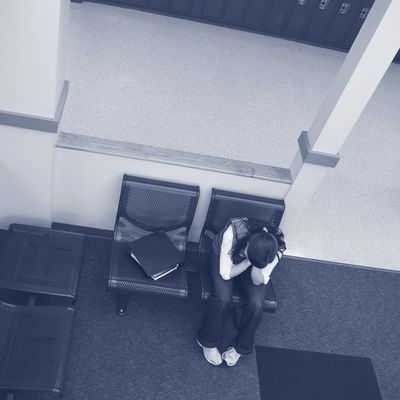
There’s no question that America’s general tenor on gay rights has changed for the better over the last decade or so. It’s all felt very sudden: Just three presidential elections ago, gay marriage was portrayed as a potentially existential threat to “traditional values” (or whatever). Today, most Americans approve of gay marriage, and thanks to the Supreme Court, it’s the law of the land. It’s a nonissue this election.
That doesn’t mean it’s easy to be a gay or bisexual young person, though — not by a long shot. According to the “first nationally representative study of U.S. lesbian, gay, and bisexual high school students,” which was just released by the Centers for Disease Control, gay and lesbian students are facing levels of violence, bullying, and risk of suicide far higher than their heterosexual peers.
For the study (the full text is here, and the press release is here), the CDC drew upon a survey of 15,000 students who were asked, among other things, whether they had dealt with a wide range of problems at school, ranging from bullying up to sexual assault. Some of the key results, broken down to highlight the differences between the experiences of straight students and LGB ones:

The rape and suicide numbers are particularly shocking: Almost a fifth of LGB students have been raped, and almost a third have attempted suicide.
What all this suggests is that while it’s easy to celebrate what feels like a steady march toward progress on gay rights at the zoomed-out, national level, what’s going on in schools around the country is very, very different — and in many of those schools, it must be agonizingly difficult for many LGB students to simply attend school in a safe, enriching manner.
One thing missing from the report is information about transgender students. Past research suggests that trans students are horrifyingly likely to be assaulted, bullied, and to consider and attempt suicide. But it looks like the researchers only asked about sexual orientation, since the survey notes, “For the 2015 YRBSS cycle, a question to ascertain sexual identity and a question to ascertain sex of sexual contacts was added,” and there don’t appear to be any questions about gender identity.
Statistically speaking, it must be the case that some of the LGB student respondents were trans — some trans people identify as straight, others as gay or bi — but without this being a separate category, it’s impossible to make comparisons. It stands to reason, though, that the story for trans students would be at least as heartbreaking as it is for LGB ones.




